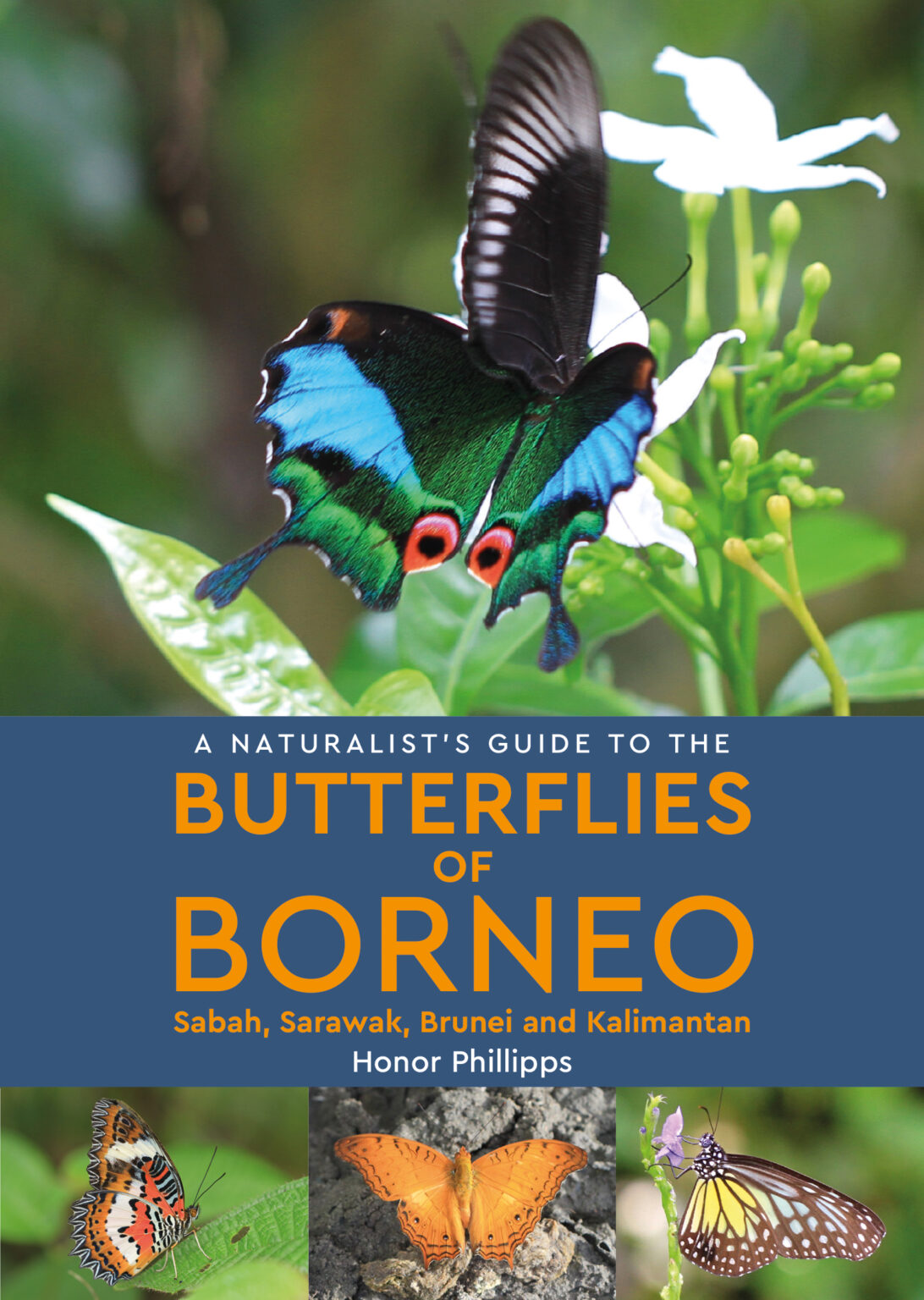Honor Phillips
John Beaufoy Publishing
2024
ISBN: 9781906780692
Reviewed by Richard Harrington
The Island of Borneo comprises Sabah and Sarawak (states of Malaysia), Brunei (an independent sultanate) and Kalimantan (a district of Indonesia). It is mostly forested and hugely rich in terms of biodiversity.
This is not a comprehensive guide for the well-versed lepidopterist who may be heading there in search of rarities. Rather, it is a must-have for an enthusiast who happens to be in Borneo and wants to know which species they encounter rather more casually. It covers 122 butterflies, about 10% of those native to Borneo but, the author reckons, roughly 90% of likely sightings. Perhaps oddly, eight moths are included, the reason for the selection not being clear.
The book introduces the climate and geographical regions of Borneo and lists thirteen prime sites for seeing butterflies (including the Kipandi Butterfly House – is that cheating?). It then covers the basics of life cycles, morphology and behaviour, before launching into the species descriptions, arranged by family. For each species there is a photograph or two with a description and comparison, where appropriate, with similar-looking species. There is a coverage of its habitats and habits, larval food plant(s) and geographical range. The moths then receive the same treatment. There follows a page warning that if you use a light to attract moths, they may be grabbed by geckos. The call of the gecko is even described. Curious. Two pages then show examples of eggs, larvae and pupae, one of each for each family. There are a further two pages showing four examples of larval food plants then two more showing four common nectar plants. How these tiny samples were selected is unclear. A bibliography and index complete the 176 pages. The price is not written on the cover, so I looked for it on the web and it seems to be good value at around £12. In the process, I saw pictured three different cover designs. Qué?


